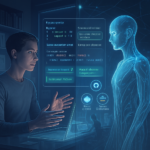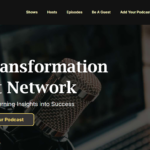An Harvard Business School article caught my eye for a number of reasons: ‘Where Can Digital Transformation Take you? Insights from 1700 leaders.’1 It is really worth reading in its entirety, but I narrowed in on three extracts (and the fact I did that proves the premise of this article!)
Extract 1.
“Digitally mature organizations embrace data—lots of it!—and use it to make better, faster decisions.”
It got me thinking: How do you make decisions that are ‘data-informed’ if you don’t know what you don’t know?
Yes, data is important: you have to research and measure or you would have no way of predicting outcomes and that would be a scary way to operate any business. But ‘data’ has become increasingly disorienting.
If the pandemic in a digital world has highlighted anything for me it is that whatever one set of data tells you, you can find another dataset to show the opposite (or, at least, significantly different). While governments consulted modellers and health experts to determine pandemic response plans, they simultaneously ignored modellers and health experts who said something different. Am I too cynical believing that voter polling (one dataset) seemed to influence the adopted ‘public health advice’ more than some of the modelling (another dataset)?
What data can anyone believe in the digital era? How is decision making better in a digital organization, if there is a possibility that the data being reported reinforces a certain view? There may be all manner of reasons why certain information is sought, collected, reported and used.
This has led me to wonder about the following about digital organizations:
- Do you measure what’s easy to measure or what the business needs to know to make informed decisions?
- How do you know what you don’t know, either because it is not there yet or is there but is simply less visible? It could be invisible AND significantly impeding organization performance. As Albert Einstein pointed out: “Everything that can be counted does not necessarily count; everything that counts cannot necessarily be counted.”
- When people are working long hours, they don’t have time to do thorough investigation before a decision is needed. In the post-pandemic world, many organizations are understaffed and in survival mode. How much data is being funded that never sees the light of day?
- As a senior manager, can you trust the information you are given? Businesses are increasingly complex and it is more possible than ever to be selective in data that is reported.
- Confirmation bias: perhaps in a turbulent world, the average person seeks ‘sameness’ and is prone to pay attention to data that aligns with a current accepted viewpoint.
The next extract compounds these challenges.
Extract 2
“……….data informs, not determines, their (digitally-mature organizations) decisions. Analytics are important, but judgment and critical thinking ultimately set the roadmap……While 61 percent of survey respondents ranked “data-informed decision-making” as one of the most critical success factors in the digital era, judgment—an analogue skill—is still required.” (Emphasis added)
Many have pointed out that data, information, knowledge and wisdom are different. This implies a linear process from raw form to meaningful form but given the sheer volume of data and sheer speed of operation, it is possible that something altogether different is needed for decision making – knowledge and wisdom that is not a linear progression from data and information. (Foresight before data?)
The human brain is both organ and instrument; able to send and receive messages at a meta level. Some may call this sixth sense and imply only a few have it. Others believe super-senses, such as pre-perception (the opposite of hindsight), are engineered into what it is to be human. 2
The final extract challenges organizations to function in new ways.
Extract 3
“All employees, not just the data scientists, use data to develop new insights and foresight instead of relying on past experience. Given the speed of change, hindsight might be irrelevant to the task at hand. Digitally mature companies have the right technical expertise (such as experienced data scientists or analysts), tools (dashboards and data visualization applications), and platforms (computing infrastructure and operating systems) to integrate data across their organizations.” (Emphasis added)
How do you achieve integration in what are still largely siloed, functionally-divided organizations? How do you achieve ‘one source of truth’ (not to debate here what is meant by truth), and if you don’t, is the data not potentially misleading?
Guidance systems
The above three extracts appear under the article sub-heading: Culture that’s data-informed, not data-driven.
The Institute is currently publishing a book entitled: ‘Digital Transformation Demystified.’ The book is approximately 250 pages long and the word culture appears 354 times in the book – 40 times in the Summary. The book has a total of 10 authors from diverse backgrounds, yet culture is a consistent theme.
This seems significant in seeking an answer to the questions in this article. It brings to mind Stephen Covey’s True North.3 In the context of an organization, this is a principle-driven stance an organization takes. If part of your stated, deliberate position is to seek contradictory data to challenge current biases, it is more likely you will reveal relevant data that the organization needs for continued relevance, even survival, which may otherwise never see the light of day.
Fact vs Feeling in a digital world
Waytz et al4 referred to the default brain network – an inherent brain capacity:
“During wakeful periods when your brain is not focused on any particular thought (when your mind is wandering or you’re just plain ‘zoning out’), a distinct network of brain regions still fires up.
We call it the ‘default’ network. It’s also sometimes referred to as the ‘task negative’ network because it’s engaged when people aren’t concentrating on a task…….. The default network is also responsible for one of our most prized abilities: transcendence.
A range of sources seem to be pointing to a layer deeper than data. This is about that inner awareness – that sense of knowing – that gives the framework for data generation, analysis and conclusion. Hill et al in the main article refer to Judgment as an analogue skill. So too are skills such as insight and intuition needed to make sense of data. If these capabilities are as important (if not more so) than digital capability, how equipped are today’s organizations for this type of work?
Getting to the truth (Can we handle the truth?)
If you are committed to really getting the data you need, to know what you need to know, perhaps it is more about quietening the chatter, creating some space to think, and listening to what the data is pointing to, and to the whispers about what is missing. That is an analogue skillset. Suspend in the questions: What is this telling us to do? and What are we missing?
Sources
- Hill, L, A L Cam, S Menon and E Tedards. “Where Can Digital Transformation Take You? Insights from 1,700 Leaders.” HBS Working Knowledge. 31 Jan 2022
https://hbswk.hbs.edu/item/leading-in-the-digital-era-where-can-digital-transformation-take-you - Machado, L. (1990). The Brain of the Brain. Cidade do Cerebro. Rio de Janeiro.
- Covey, S. The Seven habits of Highly Effective People. (1989) https://www.amazon.com/Habits-Highly-Effective-People-Powerful/dp/0743269519
- Waytz, A. & Mason, M. (2013). Your Brain at Work. Harvard Business Review. July-August 2013. https://hbr.org/2013/07/your-brain-at-work
Tag/s:ImaginationOrganizational ChangePersonal Development





